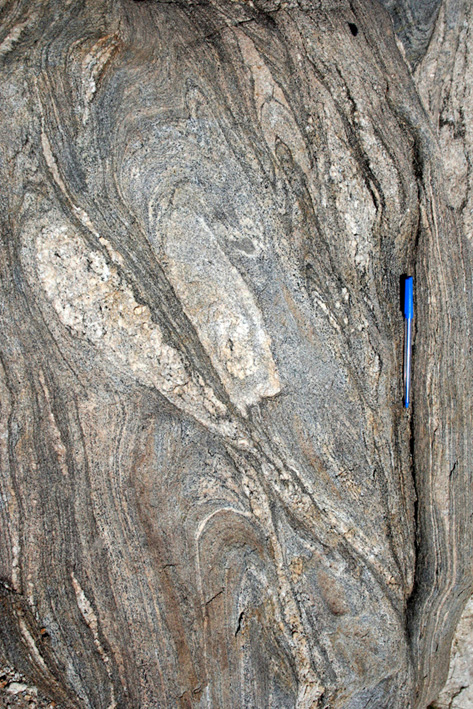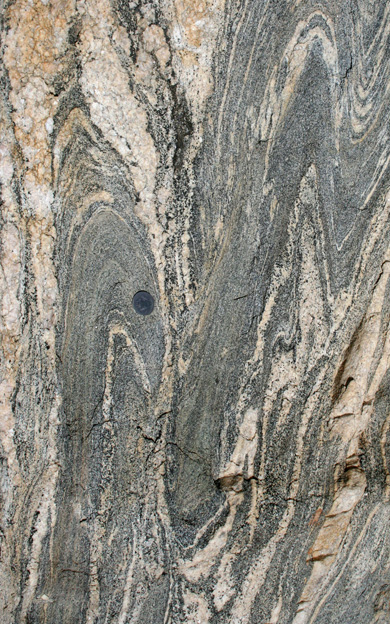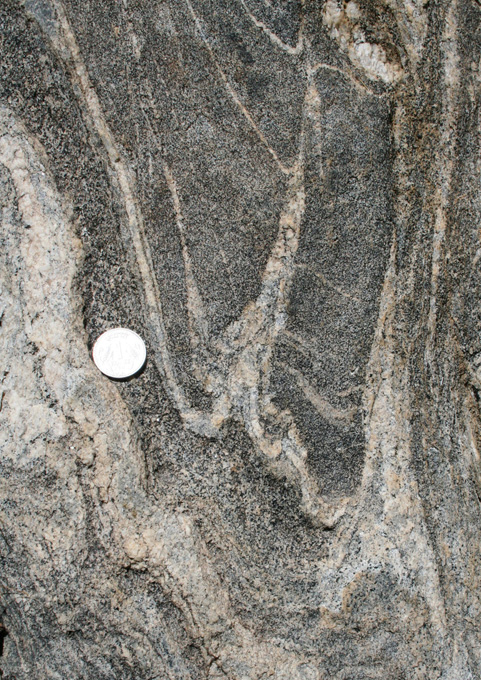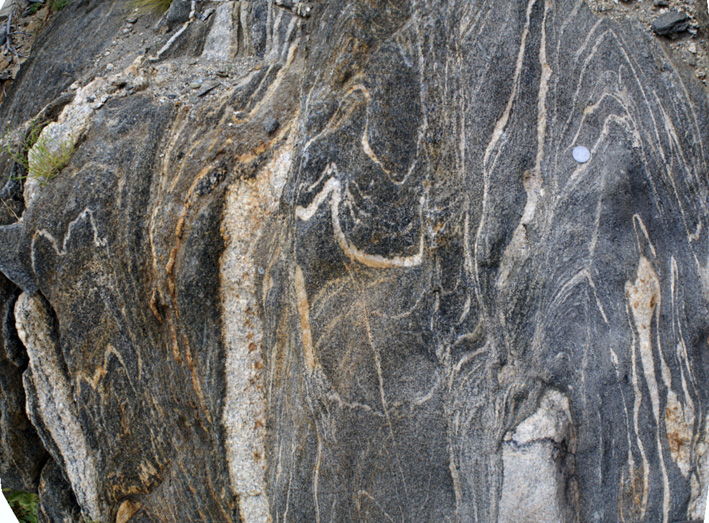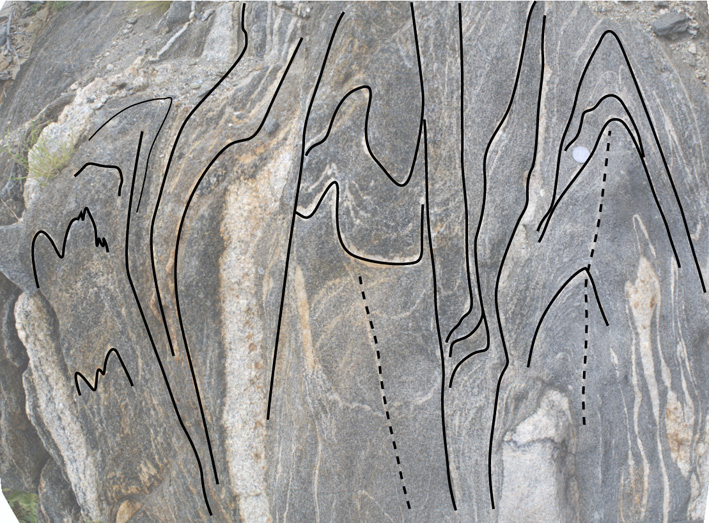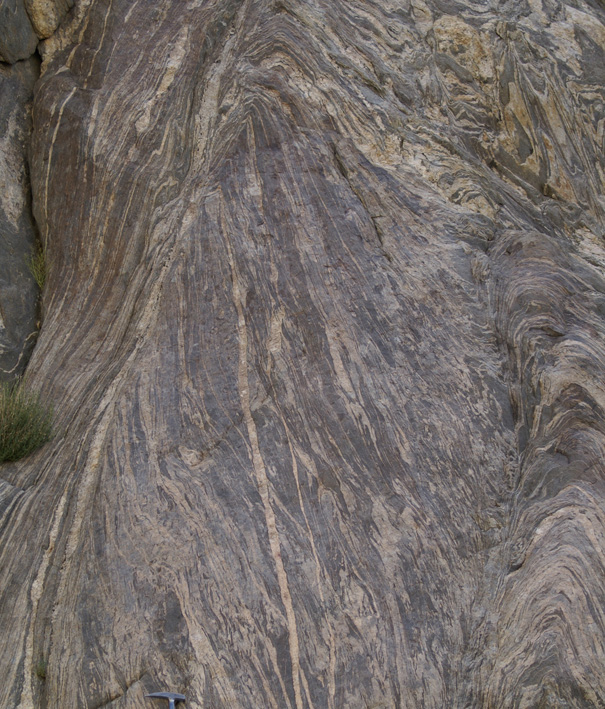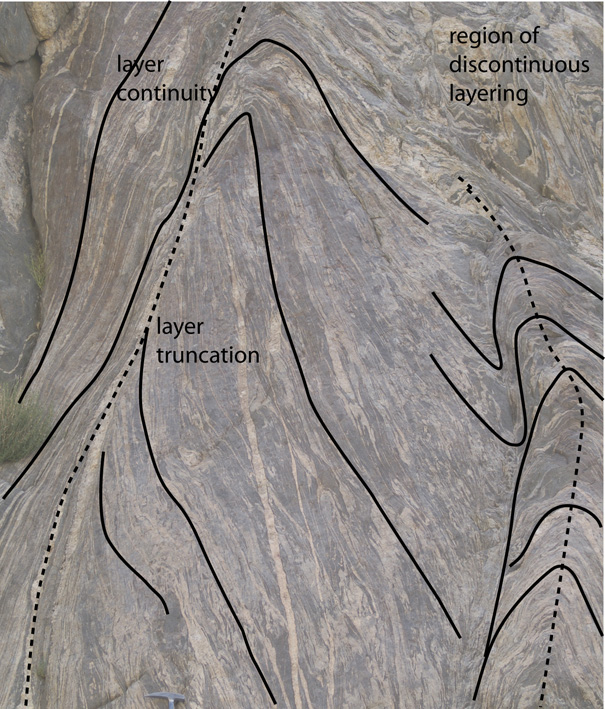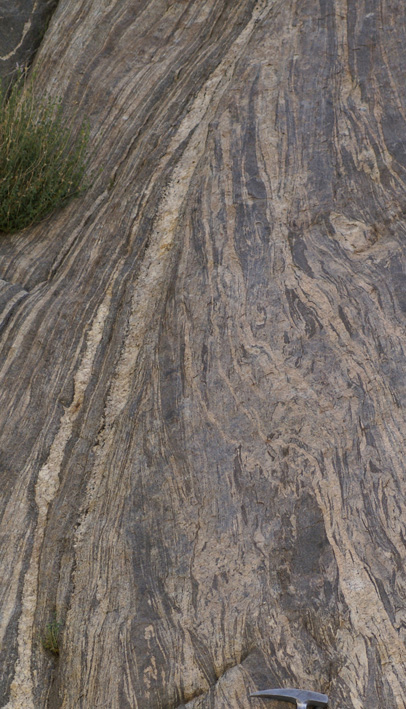Preferential Preservation of Antiforms During Folding of Biotite-Amphibolite Anatexites, Ladakh, NW India
|
| This page focuses on two main aspects of folding during partial melting of biotite amphibolites: a) the preference for preservation of antiforms rather than synforms; b) truncation and continuitiy of layering across fold hinges. All photographs taken down plunge of fold axes over a small area of outcrop in the Tangtse gorge in NW Ladakh, centered around coordinates N34 02' 29.4" E78 13' 18.1". |
Note to author: preference for antiform and destruction of synform, 4759 needs to be accompanied by a line drawing, 4779good, IMG_4776zoom, 4784good synform and melting pushing up, stitched_894, DSC00879good, 988, 989, 991, 976, 868, 871
a) Preferential preservation of antiformal hinges and destruction of synforms
| Figure 3a. (Stitched_892-894 outcrop). Three discontinuour sets of folds separated by stretched zones of transposition. The sets on the left and right are antiforms, whereas the central one has both a synform and an antiform. Layer parallel leucosomes have diffuse boundaries with surrounding biotite amphibolite, and diffuse contacts with axial planar leucosomes. | Figure 3b. Line drawing. Dashed lines mark narrow axial planar leucosomes, as opposed to the three wider axial planar dykes. |
|
|
|
| Figure 4a (988 outcrop). Two antiforms separated by a tight, nearly transposed synform. The antiform on the left evolves upwards into an isolated fold hinge zone within tramnsposed surroundings. The antiform on the right continues on to a synform further to the right (not shown). | Figure 4b (976 outcrop). Folding of melano- and leucocratic layers separated by a mesocratic axial planar dyke (left), and a leucocratic axial planar dyke (right). Layering is discontinuous across truncating axial planar dykes and boundaries between dykes and surroundings are diffuse and continuous into layer-parallel leucosomes. The synformal closure on the left-hand-side and antiformal closure on the right have been disrupted. Interpretation: syn-anatectic folding, where axial planar dykes represent magma escape channels. The mesocratic dyke contains newly grown porphyroblastic hornblende resulting from partial melting of the surrounding biotite-amphibolite. Such hornblende can also be seen in small numbers in the leucocratic dyke, as well as along well-defined layers in the folded rock. See page on amphibolite melting. |
|
|
|
|
| Figure 4c (IMG2199 block). Two antiforms. The intervening synform was used as a slip plane. | Figure 4d (3854 ). | Figure 4e (3883). |
|
Figure
5 (991
outcrop). This
figure shows the less common case of three synforms
separated by narrow (right), or stretched out and transposed
(left) antiforms.
|
PART B: truncation
of fold hinge zones
|
|
